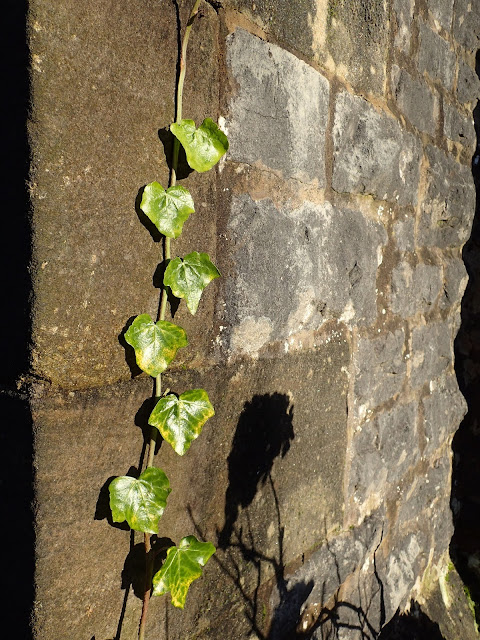 |
| Melanohalea exasperatula |
There are several brown Parmelioid lichens which grow on trees - (i.e. brown, not grey, foliose lichens with quite a big flattish thallus). The common ones can be split into two genera: Melanelixia and Malanohalea.
They both used to be called genus Melanelia Then they were split off from Malanelia.
The two common ones are Melanelixia glabratula and Melanelixia fuliginosa. Melanelixias have a dark undersurface to the thallus to the thallus and if C (bleach) is applied to the upper part of the medulla, it will go red fleetingly (i.e. cut the surface of the thallus to see the white just under the surface and add bleach). This is because they contain lecanoric acid.
The second group are the Melanohaleas. These do not have the pigment lecanoric acid, so the medulla does not go red with bleach. The undersurface of the thallus is pale brown. The genus name is a mixture Melanelia (meaning black) and Hale from Martin Hale who carried out research on them.
Melanohalea exasperatula has a thallus to 5 cm diameter lobes to 5mm wide with incised margins, margins only loosely attached to the substratum. Undersurface pale brown. Isidia mainly simple, larger, often randomly decurrent, hollow, shaped like the bowl of a spoon
 |
| Melanohalea exasperatula |
 |
| Melanohalea exasperatula |
This one was growing on a garden seat - with plastic weave - in Settle in a garden close to the Water Tower House at Settle Station. (August 2020)
------
 |
| The Melanohalea exasperatula seat |
 |
| The Melanohalea exasperatula was growing with more common things such as Xanthoria parietina and Physcia tenella |
 |
| Another view of Melanohalea exasperatula |
---------------------------------------------------------------------
Last month (Christmas Eve 2021 lunchtime) I explored the field
SD82366500 just east of Langcliffe Church and found some more of what I thought at the time was M exasperatula. But now I think it is M laciniatula.
Because
the lobes are very frilly
There are no isidia (at least not ordinary sticking up like pegs/fingers ones)
 |
| Melanohalea laciniatula |
-------------------
Last 24 April 2020 on a Lockdown walk I visited the tree in the carpark below Giggleswick School on the corner of Church Street and Raines Road. SD81016400
It definitely had Melanohalia laciniatula.
It had other lichens too.
 |
| Melanohalia laciniatula |
 |
| Melanohalia laciniatula -magnified |
 |
| Melanohalia laciniatula |
These two were on the tree too:
 |
| Still working on this.. |
 |
The lichens here might be:
Physcia tenella
Phaeophyscia orbicualris (young) - towards top left
Candelariella reflexa
|
There is a record before of M laciniatula for our hectad, but not of M exasperatula
















































